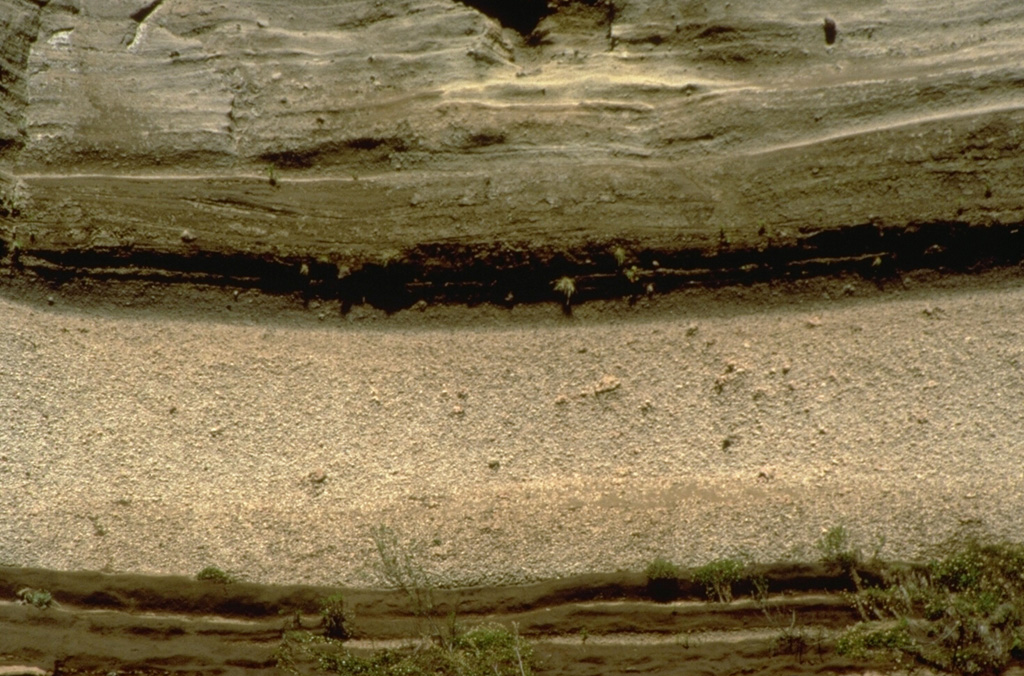Image GVP-04887

The light-colored layer at the bottom of the photo is a plinian pumice-fall deposit from Llaima volcano that has been radiocarbon dated at about 8800 year ago. The deposit is 4-m thick at this location, on the Río Trufultruful, 12 km SE of the summit. The dacitic pumice is the most silicic eruptive product known from Llaima and marks the largest known eruption of the volcano during the Holocene. The darker, laminated layers above the pumice deposit are 6-8 m thick pyroclastic-surge deposits from the same eruption.
Photo by Norm Banks, 1990 (U.S. Geological Survey).
![]() This image is made available as a Public Domain Work, but proper attribution is appreciated.
This image is made available as a Public Domain Work, but proper attribution is appreciated.

Llaima
